Are you a strong or a weak person? "Strong," most people quickly answer. But, that answer isn't entirely correct. It’s not a stupid answer though, it’s my question that’s stupid.
My question is built on a false assumption, on a widespread misconception that prevents human beings, teams and organizations from growing. The misconception is that there is a duality, an “either or” where there should be an “and”. Let me clarify with an example from my own life.
I like working out and jogging is my favorite way to do so. Some time ago my knee started hurting and the doctor said I needed to strengthen my leg muscles, especially thighs, hamstrings and glutes, to get rid of the problem. I was recommended squats, apparently the exercise of exercises for building strength and an exercise I’ve always hated. I’ve never been able to lift as much as other people doing squats and therefor doing them has made me feel weak. A physiotherapist recommended me to start with an empty barbell (20 kilos or 45 pounds) on my shoulders but I saw that as advice for people not used to working out and considering myself a strong man I started with much more than that and increased the weight a lot between every session to avoid being caught doing “sissy squats”. During my fifth session I hurt my back lifting to much with bad technique. Suddenly I couldn’t work out at all and I was truly stuck with my weakness. Fortunately, in this moment of misery I also realized what I needed to do to get rid of my weakness – embrace it!

(That's not me in the picture!)
After resting a long time for my back to recover fully I started doing squats at the gym with only the barbell on my shoulders. I increased the weight slightly between every session and allowed myself a lot of rest between the sessions. For months I forced myself to be the weakest person at the gym. I got used to it and eventually I didn’t care anymore and one day as I sat down to rest I noticed people lifting less than I did, and yes, as proof of the strength I had gained that fact made me feel good. More importantly it inspired me to embrace the weakness of other muscles and use the same approach to build their strength too.
The whole episode made two principles for building strength evident:
1, You will never get stronger if you can’t admit your weakness. We are all both strong and weak. There is no “either or” – you maximize your strength as you maximize your ability to be weak.
2, Admitting weakness is easier when you feel strong. Might sound like a catch-22 but since admitting a weakness within one area is easier if you feel strong within another, it doesn’t have to be.
Consequently, if you want to improve the strength of your team, the first step is to help people connect with their existing strengths. In most teams, the primary reason people avoid admitting their weaknesses is their fear of not being a valid member, of not making a sufficient contribution. So, that’s where you should start. By acknowledging them for who they are and the value they bring to the team you prepare them for embracing their weaknesses as well.
There are tons of methods for routinely acknowledging each other in a team. My favorite one is to divide the team into groups of three (pairs and quartets work fine too). One in the trio starts sharing what he or she has contributed with recently and afterwards the others take turns giving appreciative feedback. When everyone has shared and received their positive feedback you’re done. This approach strengthens the bonds between team members and makes them feel valid, secure about their position in the team. It also creates a fearless atmosphere where people talk openly about their weaknesses and seek each other’s support to become stronger.
Try this out in your team and you’ll soon find yourselves in a virtuous cycle towards creating an environment where all of you feel safe to express all that you are, and that truly is the state of a high-performing team!
# # #
For more ideas and advice check out my book "".
Yes, we should start with asking ‘why’. But, if we don’t start with the right ‘why’, the rest will fail as well. If you’ve started by asking why your organization exists, there’s a risk that you haven’t dug deep enough. The effect might be a dysfunctional organization with high levels of disengagement and poor performances.
When it comes to organizations, the big ‘why’ is why we have organizations at all. Some hundred thousand years ago the first organization saw the light of day. Today we call this specific kind of organization a family. Over time the families grew into larger tribes, but the original purpose of the organization remained the same – to ensure survival and human growth. Since then, this mother of all ‘whys’ has been obscured by a myriad of less important ‘whys’.
This is not to say there can’t be other ‘whys’ of an organization. There can, and there should be, but if these additional whys make you lose touch with your fundamental ‘why’ you’ll soon be lost too. The organizations that remain connected with the original ‘why’ also remain successful over time – for example Toyota who “build people before they build cars” and Zappos who enable people to act like self-directed entrepreneurs instead of being inhibited by a manager who tells them what to do.
Staying focused on ‘the mother of all whys’ you can build a robust high performance culture, but the moment you start prioritizing another ‘why’ you start hacking away at its foundation. Comparing two different perspectives on a few common organizational practices show the subtle but crucial difference of staying connected with the primary purpose:
This is not a question of either or. It’s both, and without both, without connection to the deeper purpose using these practices, you will struggle forever to access their leverage.
It takes courage to allow improved performances and results come as a positive by-product of human growth but leaders with that courage are rewarded with an organization full of people who support each other’s growth and work proactively together to fulfil the primary purpose of the organization. In organizations like that, productivity, execution, reaching targets and problem solving comes naturally.
Good luck on your continuous improvement journey and don't forget to start with the right 'why'!
# # #
For more ideas and advice check out my book "".
87 % of employees at all levels of today’s organizations are not engaged at work. A quarter is actively disengaged, according to Gallup's 142-country study. Why? Because the way today’s organizations are lead belongs to the past. A closer look reveals that most “modern” leadership principles date back to when our first ancestors saw the light of day.
A constant hunt to stay alive
For our first ancestors life was a constant hunt for food to stay alive. They lived in groups of a few dozen hunters and gatherers that roamed the world and these groups can be considered an embryonic form of a human organization. As these early humans, approximately 15 000 years ago, started to develop some sense of self-awareness and increased their ability to handle complexity, the family bands grew into tribes of up to 100 members. Apart from the elders having some degree of authority and very basic task differentiation the most salient organizational character was their shared purpose – to stay alive by engaging in a constant hunt.

Slave or enslave
About 10 000 years ago a human invention causes a breakthrough in organizational development. The invention? Language! A refined language made it possible for a human to have a conversation with him- or herself, i.e. think. As a result the human ego forms. People started to see themselves as separate from others. With ego differentiation came role identification. Your role and place in the pecking order was decided by your wealth measured in the currency of the time – physical power. Humans were divided into superiors and foot soldiers. The chief bought the allegiance of his court by sharing the spoils and frequently displayed acts of cruelty using fear to drive people’s actions and keeping the members of the organization in place.

Signs of these leadership principles can still be seen in present time, most clearly in street gangs and the mafia.
The blame culture of blame cultures
As language developed into an even more refined system of both abstract and concrete concepts, so did the ability to understand cause and effect and the capacity to grasp linear time. This is the soil from which agriculture could emerge and approximately 8 000 years ago lager civilizations started to form as humans settled around the rivers Tigris and Euphrates. As agriculture demanded more than just strength people got the chance to, at least partly, free themselves from the shackles of slavery.
The organizational model that developed during this era had two big advantages – repeatable processes and scalability. Using this year’s harvest as the template for next year’s harvest exemplifies how the new ability of projecting into the future made stable and repeatable processes possible. However, to satisfy the needs of the increasing population these processes had to be scaled up. This presented a major challenge. Scalability requires stability and predictability and the more conscious human had realized that life was not. The countermeasure became what we today would call a formal hierarchy (shaped as pyramid) with accompanying rules and regulations. Human survival depended on this new system to work and the system depended on everyone sticking to the rules and his or her role. Deviating in any sense meant being ratted out by one’s peers and severely punished or killed. This extreme need to conform to the “absolute truth” intensified role identification and subordinates integrated their place in the organization to the extent that even if the supervisor was weak, a subordinate would not scheme to backstab him to take his place.
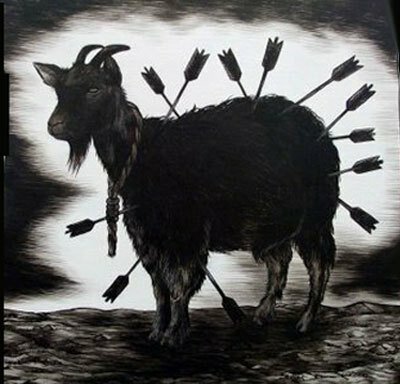
According to developmental psychologists a large share of the adult population in developed societies operates within this paradigm. Extreme role identification (“that’s not in my job description”), organizational silos (“we and them”) and the need to hide one’s unique nature and feelings behind a social mask to conform are a few of the historical remnants from this time that we can see in today’s organizations. The management style is normally called “command and control”. The organizational cultures are described as “blame cultures” and they are for example found in the military and in our public schools.
A system of carefully aligned human cogs
In the majority of modern corporations there is no absolute right or wrong, though plainly, there is a shared conviction that some things work better than others. This stage of organizational development began to emerge during the Renaissance as a result of the cognitive capacity to question authority, group norms and the inherited status quo. The aim is to better understand how the world operates in order to make better decisions and achieve more and all individuals should be free to pursue their goals in life. The worldview at this stage is solidly materialistic and life is based on the assumption that achieving the next goal (getting promoted, buying a new car, finding a life partner) will make us happy. Organizations at this stage still have the pyramid as basic structure, innovations is not seen as threats but as opportunities, how targets are met is less interesting than the fact that they are met (management by objectives) and nobody is longer predestined to stay in his or her position.

The organization can be described as a machine with levers to be pulled, brakes to be hit, bottlenecks, inputs, outputs, units, efficiency and effectiveness. Humans are the cogs that should be carefully aligned to maximize the performance of the machine. Since constant growth is expected organizations at this stage need to market themselves and feed the illusion that more stuff we don’t really need will make us happy. Success is measured solely in terms of money and recognition and the constant hunt for food has been replaced by the constant hunt for results.
The idealized rebels of our time
Today, most people find it unacceptable to prioritize productivity and growth at the expense of human wellbeing. Nor is it considered a sustainable way to create successful organizations. That’s why a modern paradigm of justness has evolved – a paradigm where people strive to belong and value relationships above outcomes. Self-acclaimed “families” like Zappos, Virgin and Ben & Jerry’s, run by the idealized rebels of our time (Richard Branson is often referred to as “The rebel billionaire”) are examples of organizations that operate within this paradigm. It’s within these, and other organizations like them, concepts such as employee empowerment, servant leadership, values-driven cultures and inspirational purposes have materialized.
The real reason for the (dis)engagement statistics
But, why are we feeling so bad when we are living in the best of times? The need to constantly overproduce to feel good about ourselves, expecting to be told what to do at work, fear of speaking out and feeling like a soulless cog in a machine – these feelings are all bred by our history! At least 87 % of us (those not engaged) are stuck there and though you might not be able to see it on the surface, age old organizational principles are still in play.
Reacting against to old keeps you in the past
A real breakthrough in human wellbeing and achievement requires freeing ourselves from the limiting mental and physical structures of our history. Not even the most modern organizational paradigm, the one with rebel leaders, has helped us do so. Being a reaction against the old, it has maintained its connection to the past. The reaction has successfully broken down a few outdated principles, but it has not really increased our room for action. Instead, the pendulum has swung past the balanced equilibrium and the baby has been thrown out with the bathwater. Words like achievement, productivity and follow-up has for some become foul language. That’s why the new paradigm is (in some case rightfully) seen as refuge for people who are lazy and afraid of conflict.
The possible future of organizational and human development
Can a slave take initiative? Can a scapegoat speak out? Can a cog be joyful? Of course not! As long as people become stereotypical, lesser versions of themselves at work, engagement statistics will remain at the bottom.
Most experts agree that the organization of the emerging future can be compared to a living organism. In these organizations all different views are integrated in decision-making and execution is supported by a natural network of people, securing that the most suitable individuals perform the tasks. The purpose of the organization will evolve over time to fit existing needs and to allow for the self-actualization of all its individuals. Most importantly, the organization of the future consists of whole, authentic people who don’t feel the need to waste energy in maintaining a social mask, and as people are free to be all that they are they will also release all of their passion and engagement.
The question is, what does it take for you as a leader to bring this organization about?
The skills you need to lead the way into the future
You might think that the biggest challenge as leader would be to see what the future holds. It’s not. The true challenge lies in freeing yourself and your colleagues from the past. Here are a few principles guiding you on your journey into the future:
1, The level of consciousness of an organization cannot exceed the level of consciousness of its leader. Most of us can discipline ourselves into picking up a new behavior for a while, only to fall back in old habits when energy runs out. Often, deeper inner work is necessary to explore what holds us back from spontaneously expressing the behavior our desired future requires. If you want others to make the necessary inner journey, you as a leader must go first and model the expected behavior by sharing your own.
2, It’s not about condemning the past but becoming free from the past. The difference is that no kind of behavior is considered generally better or worse. Instead, everyone should be free to be who the situation requires them to be, without history, big egos or predefined roles messing thing up. If you want you colleagues to be all that they can be you need to create an environment where people feel safe to explore inner conflict and can support each other in finding what holds them back.
3, Approaching the future with old methods will be futile. A future leader must be able to foresee emerging market needs and determine in what direction his or her organization’s purpose is evolving. For that, analyzing your customer’s buying patterns and recording their personal interests won’t be enough. A future leader must be able to develop a self-managing organization, powerful enough to face the increased complexity and volatility of the future. For that, defining structure, imposing policies and setting rules won’t do. To face these two challenges a future leader needs the ability to establishing deep and lasting relationships of trust to and between people.
You don’t possess these skills today? No problem. All you need is the will to be a future leader. Because if you do, you will attain the skills you need to succeed.
I wish you good luck on your journey into the future!
# # #
For more ideas and advice check out my book "".
Many who claim to be on a continuous improvement journey are way off track. The necessary foundation for successful improvement work is lacking. The result of their improvement initiatives are rarely sustainable and not until they reach the real starting point, will their improvement work truly begin.
Last fall I spoke at The Nordic Forum for Continuous Improvement right before Dave Logan, author of Tribal Leadership and Three Laws of Performance. After our presentations we talked about how different perspectives affect our ability to succeed with continuous improvement. Dave told me that less than a quarter of the organizations he and his co-authors studied when writing Tribal Leadership had the necessary culture for continuous improvement to succeed.
Here is a model developed in 1969 by Thomas Anthony Harris and it describes four possible perspectives on life. It is also an excellent starting point for categorizing organizational cultures.
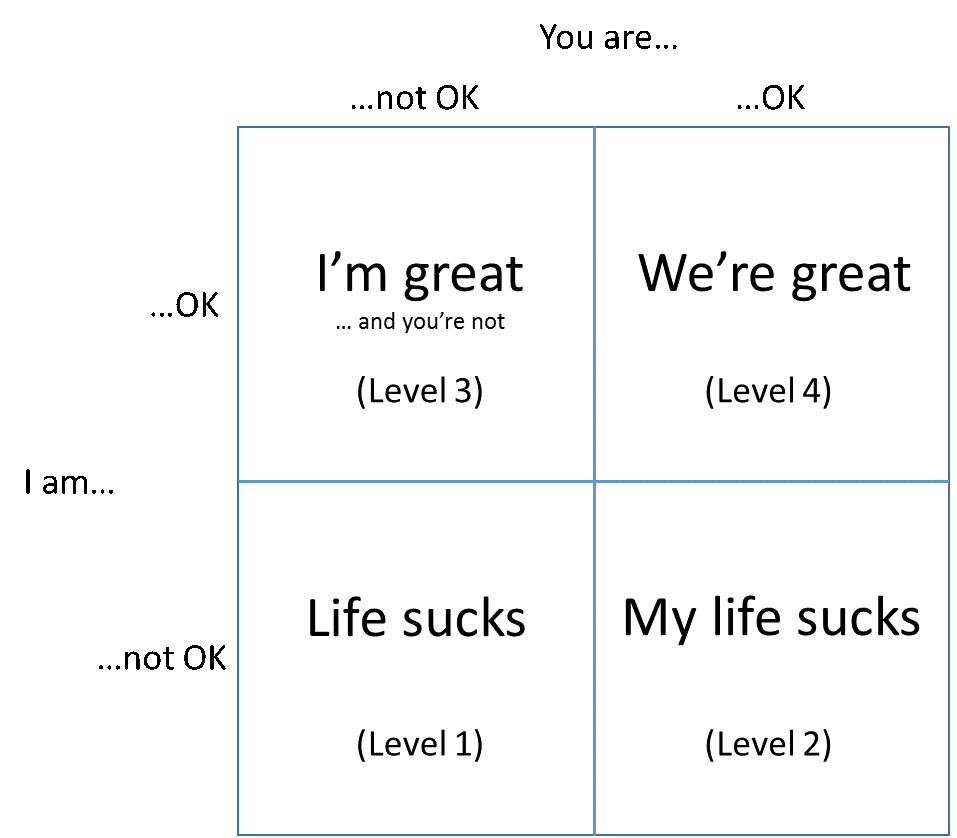
Fortunately, we only find 2% of all organizations (mostly criminal gangs) in the life defying state "Life sucks" (Level 1). "My life sucks” describes the spirit in organizations at the second level, where we find one fourth of all organizations. Victim mentality is another way to describe this culture and proactive action is extremely rare in these groups, which according to themselves get far too little appreciation. According to Dave and his co-authors nearly half, 48% of all organizations, are on the third cultural level – "I'm great, and you’re not." Here, everybody wants to be the hero. Discussions about sustainable solutions to common challenges are prevented by self-assertion and a verbal tug of war in which each individual does anything to steer the conversation towards the topic he or she knows best.
It doesn’t come as a surprise that a large portions of organizations are stuck at the second ("My life sucks") and third ("I'm great, and you’re not”) level. As children, we see that adults have more power and knowledge than ourselves. Adults are OK, but we’re not. In school, and then at work, we get a chance to advance – by exceeding others. Those who perform better than the rest eventually shift perspectives and start considering themselves superior.
"We’re great" is a result of the conviction that I am OK as I am and therefore you are OK as you are. Only 22% of all organizations are at this, the fourth, cultural level and getting here requires an epiphany – a realization that the perspective "I'm OK, you're not OK" is an illusion. Believing that another person is not OK, implies that you're not OK with yourself. If you were OK with yourself, you would have nothing to defend and therefore you wouldn’t have to see (and mentally or verbally point out) flaws in others to draw attention away from your own. When you are 100% OK with yourself, however, everyone around you will be OK too.
The journey through the different perspectives has its natural course. You can’t go directly from "Life sucks" to "We’re great." First we need to see that it’s not life in general that sucks but my life. This insight puts us in contact with something better, something to desire or even envy. With help or a little luck, we can then come into contact with at least one area where we’re better than others. Thus we slowly begin building our egos until, hopefully one day, we don’t need them anymore.
If the vast majority of your colleagues are not in the top right corner of the model (I'm OK, you're OK), the output of your improvement work will not be even a fraction of what it could be. Can a person who is not OK with her- or himself be able to take criticism in a constructive way? Can such a person work effectively together with others, take responsibility and grow? Is it possible to coach someone who feels oppressed by the boss? Is it possible to coach someone whose only interest is to maintain the spotless facade?
What do you do in your organization to create an atmosphere of ”We’re great”? What do you do to make sure that everyone feels that they are appreciated for who they are and not only for their performances? How do you turn differences into strengths and how do you achieve the necessary level of trust you need to be able to start striving for something bigger than yourselves?
At C2 Management, where I am Head of Consulting, we systematically work to improve our culture, to create the right spirit. Since ten years, we give each other frequent positive feedback. Between our monthly meetings we write praise for each other on Post-it notes and put them on our so called praise board. We always start our meetings by reading the notes of praise to each other. Everyone gives and receives a lot of praise. Previously, we mainly praised achievements. Now we put more focus on behaviors (how results are achieved) and who we are. That development, which relates nicely to the epiphany needed to move from the third to the fourth cultural levels, has come naturally and we see that our environment of genuine appreciation of who we are (and not only of what we do) makes us a stronger team where we as individuals can truly begin to grow.
The effects we’ve experienced have made us take further steps to develop our culture. Since a bit more than half a year, we invest one percent (about 2 hours per month) in strengthening the feeling of "I'm OK and you're OK." Regularly everyone at C2 gathers around. We divide ourselves into threes and in turn answer the question "who are you and why are you here?" Everyone gets five minutes to answer the question. If the five minutes aren’t used we sit together in silence until the time is up. Then the one who has been talking receives positive feedback on what he or she said during one minute each from the other two. When all three have answered the question and received positive feedback, the whole C2 team sits down in a large circle to talk about something that is important to us for the moment – a current challenge, a topic we need to align our views on or the like. Everyone gets a couple of minutes to, without being interrupted, give his or he view on the matter, and when everyone has had their say, we agree on whether something needs to be done and if so, who does what and when it should be done. This is an extremely easy way to strengthen relationships, aligning a team and creating commitment to what needs to be done. Nearly all the time is spent talking about who we are, our purpose and how we perceive things. Only a fraction of the time is spent on what we need to do and still our implementation rate is much higher than before. Maybe we shouldn’t be surprised – being acknowledged for who you are and getting the opportunity to give your view on the matter at hand are quite obvious commitment boosters!
In all the management team that I train and coach I introduce this simple ritual. They, like ourselves, experience how approaching each other this way promotes a more open and proactive climate and that they slowly but surely begin to master the noble and indispensable art of separating people from problem. Not until we succeed with that will we truly succeed with continuous improvement.
With these approaches we can occasionally break out of the box and achieve a cultural level and a state of mind best described by "Life is great”. Here, competition and what others do are unimportant. Instead, we start to focus on something far greater than ourselves, a guiding star. And I’m quite sure you all know what happens when an organizations wholeheartedly aims for the stars!
For more ideas and advice check out my book "".
To secure long-term survival in a complex and volatile world you need to develop an organization with the ability to collectively adapt and continuously improve as one synchronized entity. Better information technology and more efficient structures for keeping daily efforts aligned with long-term goals won’t be enough.
Acting as one requires thinking as one. In strong organizational cultures people instinctively react properly to change. We find proof of this at IKEA, The Walt Disney Company, known for hiring individuals who exhibit behaviors that align with the company’s values, and Toyota, who’s agility helped them reclaim the title of the world’s largest automaker only seven months after two huge major setbacks – an earthquake disrupting production and a historic recall. Most attempts to copy the desired traits of these companies fail – only 2 % of improvement initiatives inspired by Toyota achieved expected results according to an Industry Week survey.
The reason? We copy what we see and miss the point. We see systems, structures and tool but not the culture developed by leaders in the organization. Here is what you got to do to develop your culture:
Understand what culture really is and accept that you are the number one vehicle for culture. Culture is your collective self-image, i.e. what you think about yourselves in relation to the world. Thoughts are always expressed as talk, either in your own head or as the words that comes out of your mouth. Changing culture is to change your collective thinking. You do that by synchronizing what people in your organization spontaneously talk about. As a leader you’re one of the favorite topics of conversation. Take advantage of it!
Create stories that bring you values to life. When Ingvar Kamprad, IKEA founder and one of the richest men in the world, visits his stores he takes the free-of-charge IKEA-buss. Walking through a store he once lay down flat on the floor to read a price tag to demonstrate that it was badly placed. At the opening ceremony of a renovated store entrance he said it was too fancy and that they had to redo it. Cost consciousness, always adopting the customers’ perspective and representing and serving “the many people” are values that will always remain parts of the IKEA culture.
Drive out fear. Fear makes people focus on looking good rather than doing what’s right. When Toyota CEO, Akio Toyoda, told Congress he took "full responsibility" for the defects in the company's cars the message to his colleagues was clear. At Toyota you never hide problems and always take responsibility for the ones you see. That cultural trait is the basis for eliminating waste from all processes in the company and that’s what gave Toyota the agility to recover as fast as they did.
The cultural aspect of aligning daily efforts with long-term survival and growth is what will separate the wheat from the chaff. It’s time to take on the true leadership challenge of the future!
For more ideas and advice check out my book "".
For managers, time is a scarce commodity. Actually, it’s equally scarce for everyone but I start off this way to show that I know how tough it is to be a manager. When I meet managers of various kinds - CEOs, division managers, middle managers, indeed all sorts of managers - I take their lack of time into account and let them know that there’s only one thing they need to do to develop a culture of continuous improvement. This is what I tell them:
"Ask your employees to always bring one improvement idea each to your recurring (weekly or monthly) meetings."

I have stolen (with pride) this advice from management guru Peter Drucker but I usually don’t reveal that. Instead, I often get to listen to their objections. The first one usually sounds like this:
"That's not a good idea! Judging by the suggestions we normally get, it would only result in a heap of suggestions we would be forced to reject. And that would kill creativity."
"What creativity?" I get the urge of asking but I don’t. Instead, I ask them what they think is the reason for them only getting "bad ideas". Most managers realize that it does not have to do with the intelligence of their employees. There’s something else missing and that something else is clear expectations of how everyone can contribute to the development of the business. My definition of an improvement is a solved problem, and my definition of a problem is the gap between where you are and where you want to be. A "bad improvement ideas" is a sign of poor knowledge about how someone in his or her role can help the company achieve its objectives. And who is responsible for breaking down and creating commitment to the objectives of a company?
I also let them know that they don’t have to be afraid to reject a portion of the suggestions. In the organizations I have supported, we have had an implementation rate of 50 % as our lower limit and as long as at least half of all ideas are implemented and their results are highlighted I have never seen a negative effect on creativity. Though most managers follow this reasoning many deliver their next objection straight away:
"Even if I rejected half I wouldn’t have the time. If all my colleagues gave me one improvement idea at every meeting all my time would be consumed by trying to understand their suggestions and deciding on which ones to implement."
This objection confirms that I have come to an organization where managers are the bottlenecks in the improvement process. "It’s your colleagues who should make the decisions, not you," I explain. I also clarify that a high-performing improvement process is driven by all employees of the organization. Instead of making decisions in matters where the employees themselves are better suited the manager should act as a coach and make sure everyone knows where they are headed, support those who have a hard time advancing and visualize progress to increase motivation.
"But what if they take a lot of stupid decisions or change things they do not have the authority to change?"
While I appreciate the objections turning into questions, I feel the penny should have dropped by now. "Well, wouldn’t that be great!" I usually respond. The manager doesn’t agree. Then I explain that the only difference from before would be that stupid decisions and people exceeding their authority now is coming to the manager’s attention. Now you will be able to see where there’s a need for leadership and where there’s a need to clarify the priorities of the business and in which situations the expertise of certain persons should be sought. In other words, you know that your leadership has been successful when your colleagues tell you about valuable and already implemented improvement ideas at your meetings.
"But you said that you know I don’t have much time. How can you expect me to have the time to break down and communicate objectives, support those who doesn’t move forward, visualize progress and clarify roles and responsibilities?"
"What else should you do? Isn’t that precisely the job of the manager?" To start working with continuous improvement is like gradually revealing the need for leadership in an organization. The fact that the improvement potential of your leadership becomes visible can be interpreted in two ways – as a painful truth that you continue to deny or as an opportunity to grow as an individual and organization.
Not until the improvement process is running, will you clearly see what your colleagues consider your expectations of them. Only when you see how things really are will you get the chance to improve. The question is, are you ready to take on the leadership challenge?
For more ideas and advice check out my book "".
I often refer to organizational culture as ‘the dragon in the cellar’. That’s the dragon who eats our strategic change initiatives, not only for breakfast, but for lunch and dinner too. But why the cellar? Because many organizations prefer to keep the dragon – like most things we don’t want to completely acknowledge about ourselves – locked away in a place where it can’t be seen. Paradoxically that’s why the dragon carries on wreaking havoc. Only when you have the courage to face the dragon will you be able to tame it and use its great power to you advantage.

One aspect of our organizational culture – or our organizational self-image if you like – we rarely talk about is what we collectively fear. If we don’t acknowledged our fears they will unconsciously influence our decisions and actions. The following five fears are particularly important to be aware of if you want to succeed with continuous improvement:
When these fears are prevalent openness and creativity are replaced by ‘watching your back’ and ‘looking good’ and when that’s the name of the game you will never truly succeed with continuous improvement. What’s worse, if you don’t confront these fears you will forever deprive yourselves of true power, satisfaction, recognition, peace of mind and rewarding relationships.
Fear #1 preventing CI – Fear of power loss
Do you have the courage to distribute decision-making power and ability in your organization or are you afraid your colleagues will prove to be at least as capable as you are?
Driven by fear of losing it managers will hold on to power by centralizing decision-making and hoarding information. When this is the case the majority will never be given an honest chance to contribute to continuous improvement. Launching sporadic idea campaigns serves as a good alibi for a manager afraid of losing power. An idea campaign creates the illusion of power distribution but the old assumption of employees asking and managers deciding is still in play and as long as it is the manager will remain the bottleneck of the improvement process.
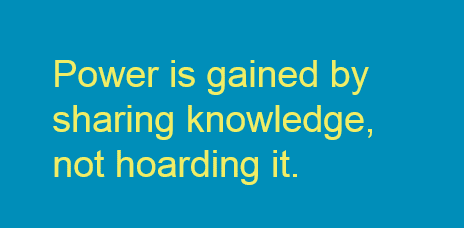
The courageous distributes power. Only the courageous can access the true power of their organization because only when you let go of your fear of losing power will you be able to launch a systematic and structured way of working where everyone is truly empowered to engage in continuous learning and improvement.
Fear #2 preventing CI – Fear of regret
Do you have the courage to let go of your point of view or are you afraid that taking another perspective will make your previous choices appear less than optimal?
From time to time I hear people asking ‘Why didn’t we do this earlier?’. To me the question has a simple answer: ‘Because you didn’t know then what you know now.’ The fact that you decided to change your approach is in fact a sign of learning that should be celebrated and not a reason for regret as the question implies.
Having a firm belief is often a good thing but when people hold on to their world views and to the methods that have taken them this far too tightly their perspective becomes narrow-minded and their actions rigid. The fear driving this behavior is the fear of regret – the fear of finding out that you could have done better – and if your fear of regret becomes overwhelming you will defend the perspective that makes your previous choices seem rational. Unfortunately, by defending your history you also prevent yourself from creating a better future.
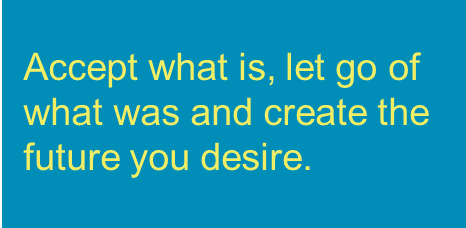
The courageous looks ahead. Only the courageous can change their perspective without fear of regret since they know that they have done and will do the best of what they know in every situation. When you let go of your fear of regret you will go from defending your own viewpoint to sharing each other’s perspective and only then will you learn from each other and give yourselves optimal conditions for creating the future you truly desire.
Fear #3 preventing CI – Fear of losing face
Do you have the courage to stop window dressing and point out the purposeless activities you see or are you afraid of being put in the naughty corner?
In the short tale ‘The Emperor’s New Clothes’ two weavers promise an Emperor a new suit of clothes that is invisible to those unfit for their positions, stupid, or incompetent. When the Emperor parades before his subjects in his new clothes, it takes the untainted mind of a child to point out the obvious fact that the emperor is naked. When you see the kind of behavior the tale illustrates in an organizations you know that fear of losing face is in the air. When it is you will hear a lot of talk about following routines and preparing for audits but not as much about shared purposes and customer needs. This is a sign that the original intention of the things you has been lost and that you have started doing them for their own sake.
I learned about an illustrative example of fear of losing face a few weeks ago. In a school where a student had gotten into trouble the first question raised when looking at the situation in retrospect was ‘Did we follow our plan?’ and not ‘Did the student get the best possible support?’.
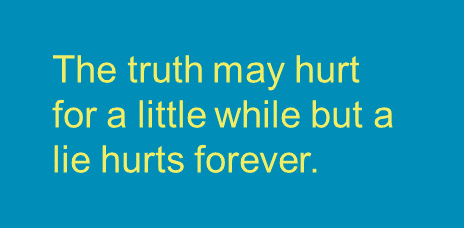
The courageous points out the elephant in the room. Only the courageous dares to ask questions such as ‘Why are we measuring this?’, What is the purpose of this meeting?’, ‘How does this improve our performance?’ and ‘Why do we have this routine?’. When you’re not afraid to lose face you can stop any unnecessary window dressing activities. The time you save can be used for identifying real improvements that will make your organization stronger and customers more satisfied. Improved reputation will follow as a byproduct.
Fear #4 preventing CI – Fear of falling behind
Do you have the courage to take time to reflect and try to find a smarter way or are you afraid that will make you fall behind?
Recently a friend only half-jokingly told me that the best way to get some time to think at his workplace was to take a quick walk through their big office space. If he did people would assume he was in a hurry to an important meeting and would not throw a pointless assignment at him. If the fear of losing speed and falling behind is widespread in an organization the main focus will become to do as much as possible as fast as possible. What you do is secondary. In this environment a pile of papers on your desk and a lot of unanswered emails are almost considered status symbols. They show that you have a lot to do and that people should leave you alone.
If you and your colleagues spend a lot of time storing, sorting, structuring, moving, and searching you might suspect that the fear of losing speed is widespread in your organization. If you feel uneasy and get a bad conscience when you get some time free for reflection you can be sure. The urge to keep busy makes people overproduce. The overproduction must be handled by someone—most often the next step in the process—and the handling often consists of the activities mentioned above.
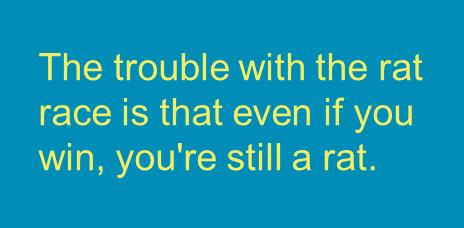
The courageous steps of the treadmill. Only the courageous will be able to see that running do you no good if you are heading in the wrong direction. When you let go of your fear of falling behind you will be able to stop focusing on short term productivity and spend some time on the strategic initiatives you ‘never had the time address because of all the firefighting’. That’s when your improvement work can become the growth strategy it is supposed to be.
Fear #5 preventing CI – Fear of losing friends
Do you have the courage to hold your colleagues accountable or are you afraid to ruin your artificially cheerful relationship?
In organizations where fear of losing friends is in the air people are afraid of expecting too much of each other. Instead they tiptoe around one another to avoid ruining the friendly but artificially blithesome atmosphere. Ventilating different opinions is too close to conflict and therefor rare in this environment. Excessive talk about ‘our friendly atmosphere’ is on the other hand very common since that reminds people to not disturb the social peace.
Until you confront this fear you will see declining effect of your improvement initiatives without anybody taking responsibility or being held accountable.
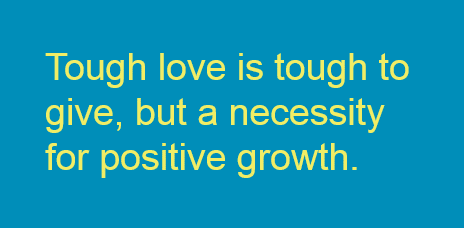
The courageous address people’s desire to utilize their full potential. Only the courageous realize that true friendship is about expecting the very best of one another rather than allowing each other to be lesser versions of ourselves. When you let go of your fear of losing friends you can start helping your colleagues to utilize their full potential and their strengths. The effect will be improved results, people who grow and superficial friendships turning into deep and mutual trust.
Setting the dragon free to utilize its great power
If you don’t have the courage to walk down the cellar stairs to confront the dragon you will never get down to the true root cause of many of you problems and they will stay with you and forever prevent your from succeeding.
Remember that your fears, like vampires, will lose their power when they are exposed the light. The courage to talk openly about them will be rewarded with true power, satisfaction, recognition, peace of mind, rewarding relationships and last but not least a foundation for truly succeeding with continuous improvement.
For more ideas and advice check out my book "".
Succeeding with Continuous Improvement has proven harder than expected for many organizations. One big reason is that there are a few challenges most organizations sooner or later encounter and where your intuitive responses actually prevent you from succeeding.
Continuous Improvement Paradox #1 – Simplicity
A common reaction to failed improvement initiatives is going for a more advanced solution. Go the other way! Simplicity will stand the test of time.
For your organization to succeed with Continuous Improvement you have to make it a natural part of the everyday work of every employee. For that to become reality your approach can’t be complicated. If it is, new employees will need special training to understand your improvement method, you will need additional support resources to keep progressing and backing it up will demand a great deal of your managers’ time.

Time is probably your most limited resource, and in the long run you won’t afford not to use everyone’s creativity. Kill two birds with one stone, keep it simple to both save time and to give everyone a chance to contribute.
Continuous Improvement Paradox #2 – Focus
A common reaction to recurring problems is bombarding them with solutions. Go the other way! Focus and dig deeper to find the real cause of the problem.
Imagine what would happen if I took you and ten of your colleagues to a junkyard and asked you to build whatever you wanted.
The most common reaction would probably be to just stand there looking around, not sure what to do. Imagine instead that I asked you to build a vehicle that could transport all of you at least ten yards without any of you touching the ground. Now your heads would probably fill with images of wheels, axles, planks to stand on, and steering wheels to guide you along the way. Instantly you would become more creative and could start to organize and divide the work among you. Some people think that creativity grows best when all boundaries are removed. The opposite is true. When we limit and clarify the task it becomes easier for everyone to contribute.
The same principle applies to problem solving. When you zoom in, dig deeper, divide into smaller pieces and discard the unessential the aha moment will come, and that’s when you find easy-to-implement solutions with great impact.
Continuous Improvement Paradox #3 – Visualization
A common reaction to lack of initiative is pointing out problems that need to be fixed. Go the other way! Visualize good examples and positive results first to inspire action.
In an environment where managers constantly tell or show people in what way they are inadequate nobody wants to be the center of attention. To draw focus away from themselves people will start pointing out faults they see around them instead, and before you know it you have developed a culture of blame.

If you start by visualizing good examples and positive results instead you will create a positive atmosphere and give people a chance to adopt a behavior worthy of praise. But even more importantly, when you continually highlight progress made and focus on the strengths people have you also create a safe environment where improvement potential can be expressed without people becoming defensive.
Continuous Improvement Paradox #4 – Ownership
A common reaction in crucial situations is adopting a command and control approach. Go the other way! Ownership is a prerequisite for using one’s full potential.
If you are told exactly what to do when it really matters you will start to question your own ability to handle difficult situations. What’s worse, when you are confronted with challenges in the future it is likely that your insecurity prevents you from taking good decisions or even acting at all.
For a manager it’s a good idea to monitor how many questions he or she asks compared with the number of statements he or she makes. What is your question-statement ratio? Do you try to be more interested or more interesting? If you double your question-statement ratio, you will both learn more and get more out of your colleagues.
Continuous Improvement Paradox #5 – System
A common reaction to shortage of improvement ideas is launching an idea campaign. Go the other way! Only a systematic approach builds organizational improvement competence.
Running an idea campaign is a popular method for tapping into the creativity of an organization. There is only one problem with them. They kill creativity! If there is an unmet need to be listened to in an organization, an idea campaign might create a surge of ideas, a surge so big that only a fraction of all ideas can be implemented. This means the majority of people will get yet another confirmation that no one listens to their ideas, and next time they are less likely to contribute.

A systematic approach should not only make sure that improvements are made and problems are solved daily but also increase the improvement competence of your organization every day. When you have a SYSTEM like that you will Save Yourself Stress, Time, Energy and Money!
For more ideas and advice check out my book "".
What is your first reaction when you see someone behaving oddly? Do you think that the person in question probably has a screw loose or do you get curious to find out how that person thinks and to learn the reasons for the strange behavior? Honestly, which of these extremes best describes your spontaneous thoughts?

Instinctively, we evaluate the behavior of others based on our own interpretation of the situation in which the behavior is performed. But, when we relate to others as if everyone else interprets a situation in exactly the same way as we do, we have fallen into what authors Steve Zaffron and Dave Logan calls “The Reality Illusion” in their bestseller Three Laws of Performance. In The Reality Illusion we fail to see the link between actions and how the situation occurs for the person performing the actions, and that creates unnecessary misunderstandings. Responding to unwanted behavior without understanding how the person behaving to our dissatisfaction perceives the situation rarely has the desired effect. Why? Because influencing behavior without a deep understanding of the other's perspective is like trying to fix a problem without first identifying the root cause. The approach gives at best temporary results but sustainable behavioral change is not achieved.
A business I supported had major quality problems and despite large investments in equipment and training quality did not improve. First after talking in confidence with a few of the employees the widespread belief that output must be prioritized over quality surfaced. The reason was that a factory in the same group had recently been closed down with reference to low productivity numbers. Not until we revealed the real root cause – i.e. the perspective that more time on quality work was an indirect threat to the plant's survival – the problem could be solved for good. For a while productivity was indeed lower, but after a few months, both productivity and quality reached record levels, and the factory has never been under threat of closure since.
Benjamin Zander, music teacher and conductor of the Boston Philharmonic Orchestra, has taught me a simple principle for motivating students to get an A – giving them an A from the start! To their surprise, Benjamin’s students always receives the highest grade possible at the start of the course. The first homework is to write a letter to Benjamin dated the last day of the course. In the letter each student should describe what he or she did to deserve the A. This method is based on a universal principle that does not only apply to students. When you wholeheartedly hand out A’s to people in your surrounding you change your view on them, you become less judgmental and your new approach brings out the best in them.
Surrounded by straight-A people you will avoid falling into The Reality Illusion and be at a good starting point for !
One of the world's most prestigious publishers, McGraw-Hill in New York City, will in November, publish the book "How to Succeed with Continuous Improvement - A Primer for Becoming the Best in the World" by Joakim Ahlström, Head of Consulting at C2 Management.
First a sports journalist question. How does it feel?
I feel inspired, fortunate and very excited about what people will think about the book when it is released in a couple of months.

Is it a big thing to be published at McGraw-Hill in the United States?
For me it's huge. At our annual conference "The Nordic Forum for Continuous Improvement" we have had world renowned gurus like Jeffrey Liker, Mike Morrison, Joseph Grenny, Matthew May and Karen Martin. They are people I look up to and I am impressed by their achievements so for me it's great to be published by the same publishing house as them.
How did one of America's most prestigious publishers find out about your book?
I have two people to thank for it: My colleague Max Wilhelmsson, and Karen Martin. Max gave my book "Best in the World" to Karen when she spoke at “The Nordic Forum for Improvement Continuous Improvement” last year and she gave the book to her publisher. They discussed it in their editorial board and then let me know that they wanted to publish it.
Is this a new book or just an English version the book "Best in the World" that you self-published in Sweden a few years ago?
Both! The experiences I share in "Best in the World" is still the backbone of the book but the new book that will be published at McGraw-Hill in November has been extended and improved. I have written two new chapters - one about improvement coaching and one about creating and sustaining a high-performance improvement culture. The new book is almost twice as long and almost twice as good;-)
Why this greater emphasis on coaching and culture in the new book?
Because they are intangible and therefore easily forgotten. When you read success stories or study businesses that have succeeded, their leadership and culture are harder to distinguish than the tools and methods they use. I still remember my fascination for the tools and methods I saw when visiting Toyota in Japan seven years ago. The tools you see are good, but many fail to develop the culture, or spirit, required for the tools to work the way they are supposed to. It is like planting seeds without taking the soil into consideration. If the soil is poor nothing will grow. If the spirit of the organization is to your disadvantage the application of the tools will be half-hearted at best. Full effect requires full commitment and to achieve that you need leaders acting as coaches and an ability to understand and develop the culture of an organization.
What do you do to help the reader improve his or her coaching skills and increase his or her chances to succeed with continuous improvement?
I will introduce some new and powerful concepts, such as the Reality Illusion, watermelon-KPIs, the Emperor's New Clothes, six-legged spiders and a few more. In addition, I will reveal the only tool that works to improve an organizational culture! Funnily enough, it is a tool many people use often without reflecting on the tremendous power of it.
Finally: What's the title of the new book and how can I order it?
It's called How to Succeed with Continuous Improvement - A Primer for Becoming the Best in the World and it will be released on November 21, but you can already pre-order it at .
Experts are held in esteem. To be an amateur on the other hand, is not as attractive. Often the word amateur is used as a condescending term for an unprofessional person whose actions are questioned. Still, I claim we need more amateurs in our organizations to succeed with continuous improvement.
If we take a closer look at the meaning of the word amateur we will find that it actually describes a person who does what he or she does for the love of doing it, because the activity itself is joyful and fun. Something will be fun when you yourself take part in shaping the activities and the goal they will lead to and when you learn and create in an environment where it's okay to fail. When using traditional methods for educating improvement experts, we often put too much emphasis on theory and not enough on making it fun. We present sophisticated methods and tools, but forget that it is the degree of joy and fun that determines if there will be any activity at all.
My suggestion is that we instead of trying to create organizations full of experts should start by creating organizations full of amateurs. Here are three reasons why I think so:
1, An amateur will find the way forward. When an amateur encounters obstacles he or she will enthusiastically seek for alternative ways forward or for solutions to clear the obstacle.
2, An amateur will ask for your help. To be able to help someone that person must be open to your help. When an amateur encounters really difficult challenges he or she will ask for help from more experienced people. This gives you the opportunity to coach the amateur, teach new methods and thereby strengthen the amateur’s improvement competence.
3, An amateur eventually becomes an expert. An amateur who with joy explores a new subject will over time develop the experience and skill of an expert. Nobody becomes an expert without first being an amateur, but amateurs who develop their ability for a long time becomes passionate experts.

With an organization full of passionate improvement experts, you will succeed with continuous improvement, but don’t forget what the first step of the journey is!
“The Emperor’s New Clothes” is a short tale by the Danish author Hans Christian Andersen about two weavers who promise an Emperor a new suit of clothes that is invisible to those unfit for their positions, stupid, or incompetent. When the Emperor parades before his subjects in his new clothes, it takes the untainted mind of a child to point out the obvious fact that the emperor is naked.

What happens to the emperor might seem farfetched but unfortunately the kind of behavior the tale illustrates is quite common even in our time, not only among individuals but also as cultural phenomena in many organizations.
In an article in one of Sweden’s largest newspapers Mats Alvesson, professor at Lund University, claims that a consequence of this phenomena is that excess documentation and window dressing activities serving to create an impeccable appearance are prioritized at the expense of activities serving to satisfy customer needs or to improve the business. The tendency to do as everyone else and the fear to deviate is widespread in many organizations. The fear of being questioned in one’s choice of strategy thumps the ambition of creating real customer value. According to Alvesson the ambition to look good rather than do well results in cautiousness, inactivity and weak results.
I can’t but agree with Alvesson. In my work as continuous improvement coach I too have seen smart ways of working and good intentions turn into “The Emperor’s New Clothes”. In the organizations where I have witnessed this undue emphasis on using the “right” tools in the “right” way has turned improvement work into a masquerade with the purpose of holding managers at a distance and making visitors impressed. In these organizations the improvement process itself can look worthy of imitation but business results never improve. The reason is that the improvement process has become a separate entity that is maintained for its own sake and not for the reasons it was originally created – i.e. to help the organization solve problems preventing progress towards business objectives, increase organizational learning and create growth.
To Alvesson’s reasoning I’d like to add that culture to a person is like water to a fish. Changes in culture are hard to see and if you do not know what subtle changes to look for you will have a hard time noticing if your culture evolves in the wrong direction. But what could be the reason for a negative cultural change? It’s definitely not spite. People want to do well, but sometimes internal and external forces influence human behavior in the wrong direction. Coaching a group of school leaders last week I was told a very illustrative example of this. The school leaders said that if a situation where a student had gotten into trouble caught the public attention the first question they got was always “Did you have a plan?” and not “What did you do to improve the situation for the student?”. If external or internal stakeholders focus on structure it becomes harder for you to stay focused on purpose.
So what should you do if you get the feeling that you are wearing “The Emperor’s New Clothes” and suspect that you have wound up in unproductive behavioral patterns? Talk about it! Only when problems are brought to the surface will they be possible to solve. Some will even, like vampires, lose their power as they are exposed to the light.
One of the participants in our program for ”Corporate Culture Coaches” told me he had introduced the concept of “Watermelon-KPI:s” (Key Performance Indicators) in his management team. A watermelon is green on the outside and piercing red on the inside, and sometimes their key performance indicators had been too. By becoming aware of the concept of Watermelon KPIs they had become better at confronting the brutal facts of reality and less prone to attempt to “look good” in front of each other.
You will find the whole article by Alvesson (in Swedish) here. If you want to learn more about developing high performance improvement cultures and avoid pitfalls such as “The Emperor’s New Clothes” I recommend pre-ordering my new book ”How to Succeed With Continuous Improvement” that will be published by McGraw-Hill in November.
Copyright © C2 Management AB, 2017